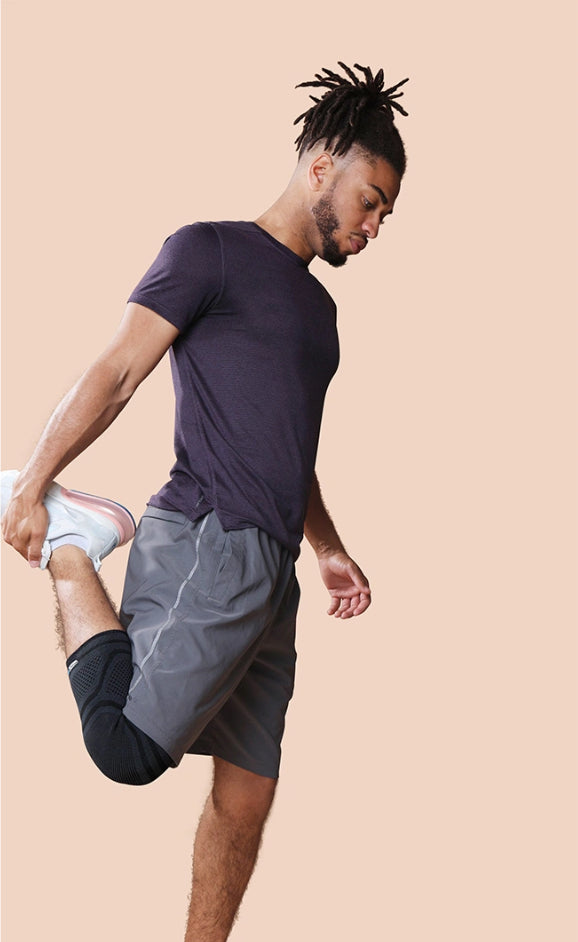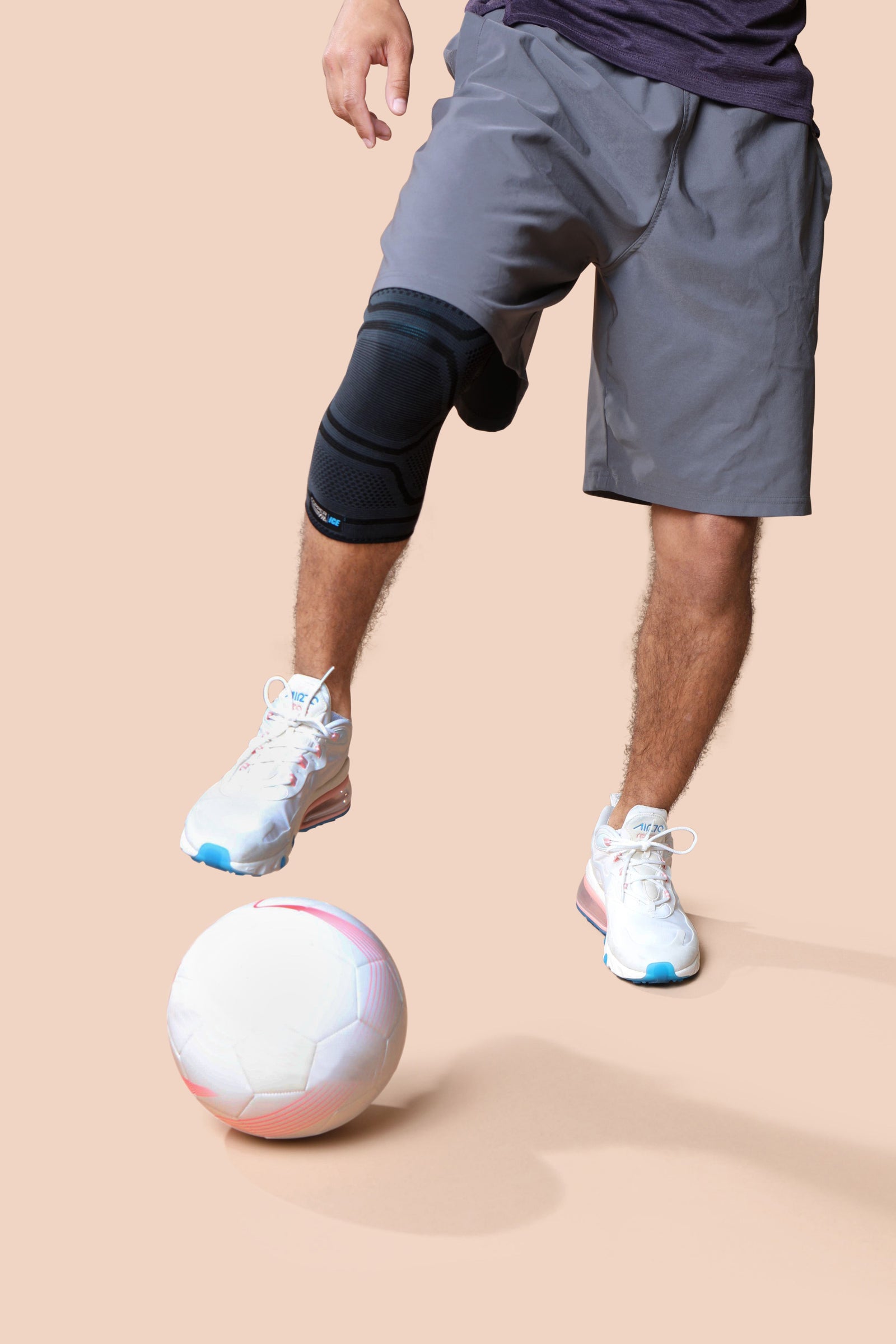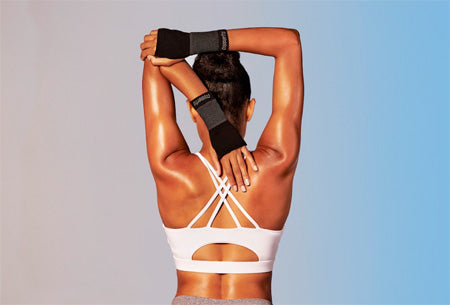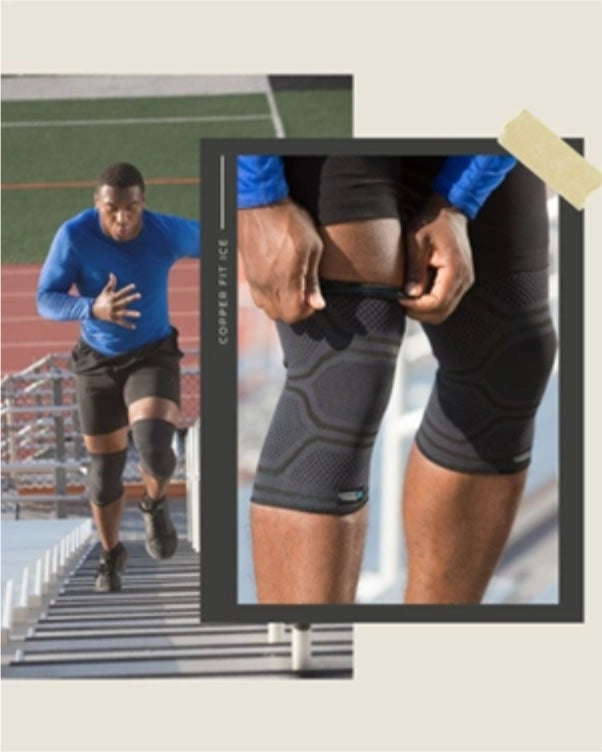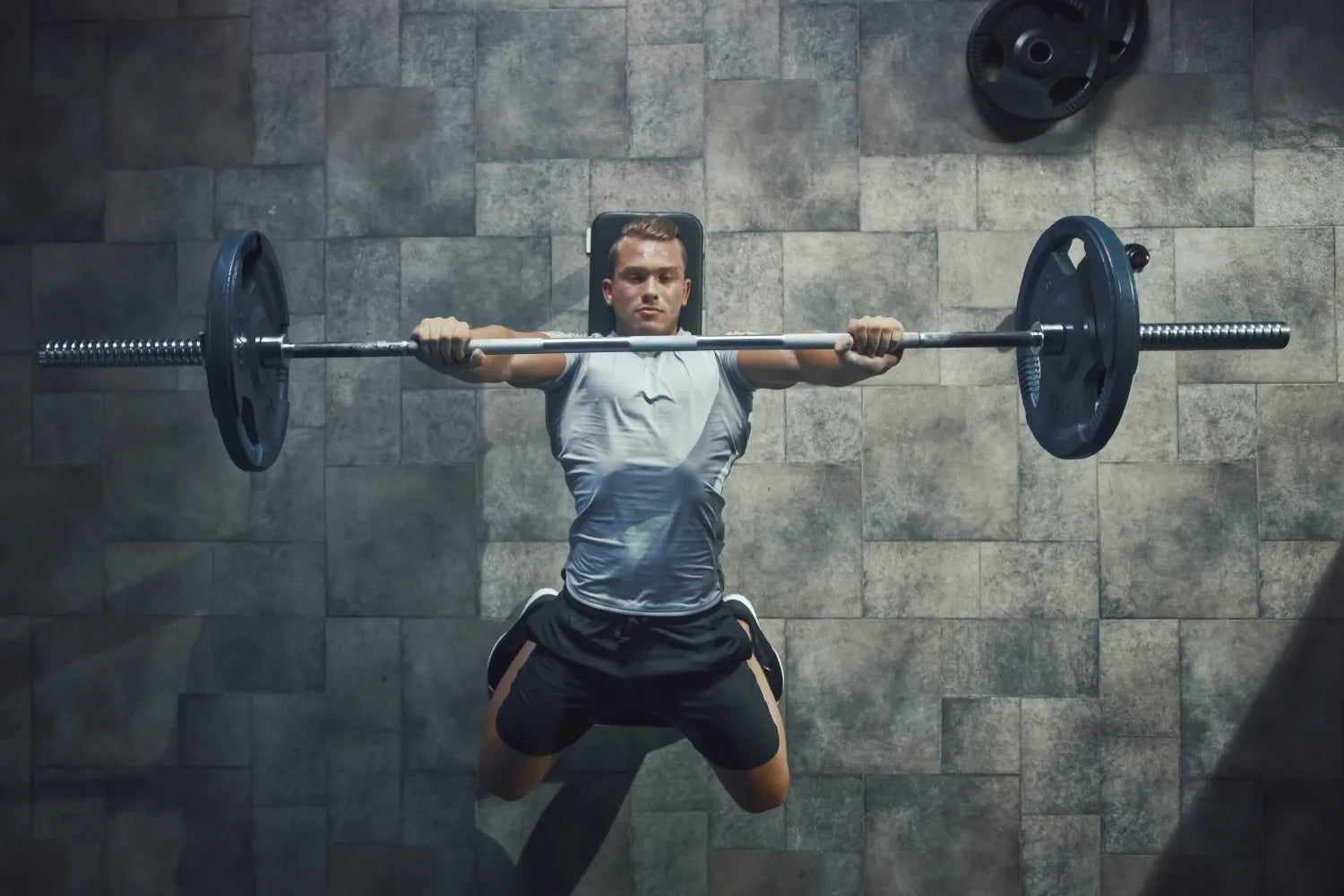
Key Takeaways
- Safe lifting begins with engaging your legs and core and maintaining proper posture, rather than relying solely on your back.
- Preparing with a warm-up, stable footing, and supportive gear reduces tension and helps promote smoother recovery.
- Compression sleeves, braces, and back supports can provide extra stability, help support healthy blood flow, and make lifting feel more comfortable.
Lifting heavy objects is something most of us do without much thought, like moving boxes, rearranging furniture, or challenging ourselves in the gym. But poor lifting habits can lead to tight muscles, sore joints, and unnecessary strain that slows you down. The good news is that safe lifting is a skill you can learn, and once you know the steps, your body will thank you.
When you understand the mechanics of lifting, warm up properly, and use the right form, you give your muscles and joints the support they need. You also set yourself up for better performance, quicker recovery, and less discomfort.
This guide breaks down everything you need to know, from body mechanics and step-by-step technique to recovery strategies and everyday prevention tips.
Understanding the Body’s Mechanics
Your body is designed to lift and move, but only when you use the right muscle groups. The legs, glutes, and core are your main engines for power. These larger muscles are built to generate force and stabilize you. Your spine, on the other hand, works best when it stays aligned and supported.
When you bend at the waist and pull upward with your back, the smaller muscles surrounding the spine absorb more stress than they should. Over time, this creates tension and soreness that can discourage you from staying active. Instead, bending at the hips and knees allows the stronger muscles of your legs and core to take over.
Maintaining a neutral spine is key. A neutral position distributes the workload evenly and reduces the chance of joint discomfort. Adding support, such as a back brace or compression sleeve, can help keep your posture steady and provide extra reinforcement during repeated lifts.
Preparing To Lift: Warm-Up & Set-Up
Preparation is just as important as the lift itself. Before picking up anything heavy, spend a few minutes warming up your muscles. Simple moves like bodyweight squats, arm circles, or dynamic stretches increase circulation and prepare your body for effort.
Clear the area around you to avoid tripping hazards. Take a moment to evaluate the object’s weight and shape. If it feels too heavy, don’t hesitate to ask for help or use lifting equipment.
Supportive gear can make a big difference. Compression sleeves for the knees, elbows, or wrists provide stability and help support healthy blood flow. A back support can remind you to keep your posture steady. Breathable clothing that allows free movement and shoes with good traction help you stay balanced throughout the lift.
Step-by-Step: Proper Lifting Techniques
Following these steps keeps your body aligned and reduces unnecessary strain:
- Get close to the load. Standing too far away increases leverage on your back.
- Plant your feet shoulder-width apart. This creates a stable base.
- Bend at the hips and knees. Squat down rather than leaning over.
- Keep your back straight, chest lifted, and shoulders back. Alignment is everything.
- Grip firmly with both hands. A secure grip prevents slips.
- Engage your core and lift with your legs. Drive upward in a controlled motion.
- Hold the object close to your body. This shortens the lever arm and reduces strain.
- Move slowly and steadily. Avoid jerking or twisting as you rise.
- Set the object down carefully. Reverse the process, bending your knees instead of rounding your back.
Common Mistakes To Avoid
When lifting heavy objects, make sure to avoid the following mistakes that can lead to added strain or injury:
- Twisting your torso while holding a heavy load.
- Jerking upward instead of lifting smoothly.
- Rounding the back or letting the chest collapse forward.
- Holding the object away from your body.
Being mindful of these small details can mean the difference between a smooth lift and lingering soreness.
Advanced Tips for Heavier Loads
Sometimes, you’ll face objects that require more than the basics. When the weight or size of an item goes beyond your comfort zone, these strategies can help you stay safe and supported.
Team Up
If an object feels too heavy or awkward to lift on your own, don’t hesitate to ask for help. Sharing the weight between two people reduces strain on your joints and makes it easier to maintain proper form. Team lifting is especially useful for bulky items that are difficult to grip or balance.
Break It Down
Whenever possible, divide a large load into smaller, more manageable pieces. Carrying several lighter boxes instead of one oversized one decreases the risk of overexertion. Smaller loads also allow you to maintain better posture and more control with each lift.
Use Lifting Aids
Tools like dollies, straps, or lifting harnesses are designed to make heavy lifting easier and safer. Supportive gear such as back wraps or knee braces can also provide added reinforcement, helping you keep stable alignment and reducing the build-up of tension during the lift.
Practice Controlled Breathing
Your breathing plays a key role in how strong and steady you feel while lifting. Inhale deeply as you prepare for the movement, then exhale as you rise with the load. This technique helps you engage your core and maintain steadiness throughout the lift.
Take Breaks
Repetitive lifting can quickly fatigue your muscles and joints. Short breaks between lifts give your body a chance to recover and reset. This prevents unnecessary strain and helps you maintain consistent form, even during long or demanding tasks.
The Role of Compression Gear
Compression gear, such as knee sleeves, elbow sleeves, or back supports, is designed to fit snugly around muscles and joints. By applying gentle, consistent pressure, these supports can help support healthy blood flow, ease muscle vibration, and encourage stability during activity.
When lifting heavier loads, compression gear can provide an added layer of confidence, helping you move with more control and easing the tension that often builds up during repetitive effort.
Recovery & Reducing Discomfort After Lifting
Even with perfect technique, lifting can leave muscles and joints feeling tight. A proper recovery routine helps reduce soreness and keeps you moving comfortably.
- Stretch gently. Focus on hamstrings, hip flexors, and lower back.
- Use cold therapy. Apply cold packs shortly after lifting if any area feels strained.
- Switch to heat therapy. Warm compresses or wraps help with ongoing stiffness.
- Wear compression sleeves. These can help promote circulation, ease tension, and support muscle relaxation.
- Stay hydrated and eat balanced meals. Nutrients and fluids aid recovery.
- Listen to your body. Rest when needed, but don’t stay immobile for too long — light movement encourages recovery.
Recovery helps you feel better in the moment and can help prevent long-term issues that can build up over time.
Preventing Long-Term Issues
The more consistently you practice safe lifting, the less likely you are to deal with recurring discomfort. Building habits around strength, flexibility, and posture is your best long-term strategy.
- Train regularly. Strengthen legs, glutes, and core with resistance training.
- Strengthen your core. A strong midsection protects your back during lifts.
- Work on flexibility. Yoga and mobility drills improve range of motion.
- Stay posture-aware. Carry proper form into everyday movements.
-
Keep moving. Regular activity reduces stiffness and helps maintain mobility.
Compression gear, worn during both activity and recovery, can offer daily reinforcement and remind you to move with stability and confidence.
FAQ
What is the proper way to lift heavy objects without hurting my back?
The safest way is to bend at your hips and knees, keep your back neutral, engage your core, and lift with your legs. Holding the object close to your body and avoiding twisting are key to reducing back strain.
How do I prepare my body for lifting heavy items?
A short warm-up with dynamic movements, wearing supportive shoes, and using compression gear for stability can all prepare your body. Taking these steps helps reduce tension and improve performance.
Can compression sleeves and supports really help with lifting?
Yes. Compression gear can help support joints, promote healthy blood flow, and provide stability during repeated lifts. Back and knee supports in particular can encourage proper form and help you feel more secure.
The Bottom Line
Here at Copper Fit, we know what it feels like when soreness or tension slows you down. That’s why we focus on helping people move better, recover faster, and stay active every day. Safe lifting is about respecting your body’s natural mechanics, preparing properly, and supporting your muscles and joints with the right habits and the right gear.
Our compression sleeves and supports are designed to help support circulation, ease discomfort, and keep your form steady during everyday lifts or tough workouts. With the right techniques and the right support, you’ll feel more confident when lifting heavy objects, and you’ll stay ready for whatever life throws your way.
Sources:
How to Find a Neutral Spine in Any Position | Healthline
Dynamic Stretches | Harvard Health

